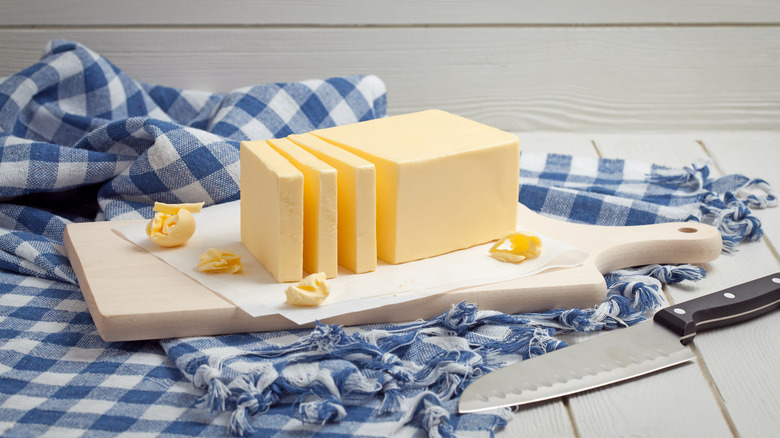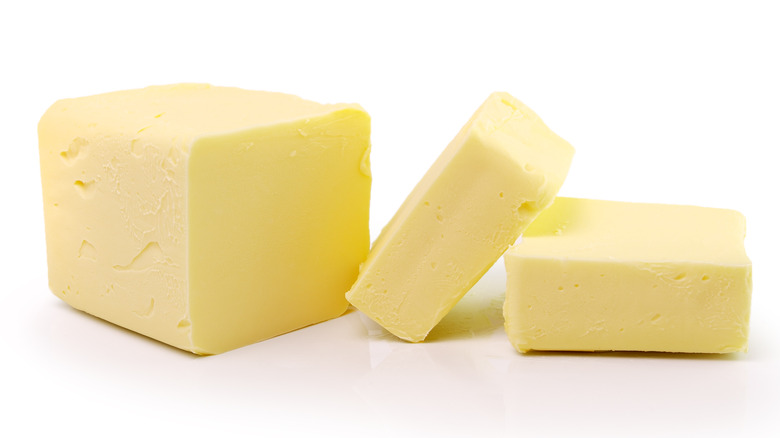The Reason Butter On The East Coast Is Different From The West Coast
There are a lot of differences between the East and West coasts in the United States: Accents are different, slang can trip you up, acceptable style differs, dishes come in all sorts of exciting regional variations, and of course, the general atmosphere is feels very different when you're traveling between the two coasts. The one thing you don't expect to be different is butter.
Butter is used all over the states, in fact, according to Time Magazine, Americans consume on average 23 sticks of butter a year. Not only do we love butter, but we also produce quite a bit for ourselves. Butter has A lot of in our foods from grease baking to cooking with frying pans. We mix it into our batters and roux, or fold into our pastries and phyllo dough. But if you are traveling between our two lovely coasts, you may have spotted an unexpected butter-sized difference.
Shaped by friendly competition
It turns out that the East Coast and West Coast have different sticks of butter. This is not necessarily something that most people would notice unless they've moved cross-country. On the West coast along the Rocky Mountain range, butter comes in short squat rectangles, while the butter lining the East Coast are long, skinny sticks (per NPR). It's a small but noticeable difference dividing our country and the thoughts of those of us who've baked coast to coast.
According to Taste of Home, it all goes back to the dairy industry. Along the East Coast and Midwest, dairy farms used an Elgin mold to shape butter. At that time, butter was sold in a whole one-pound chunk until a dairy in Elgin, Illinois (hence the mold's name) started to divide it into four individual sticks. This technique spread to the East Coast. However, NPR reports that in the 1960s, the California dairy industry started giving the Midwesterners a run for their money. To better compete with the Midwest and East Coast, dairy farmers built their own butter molds which produced the little fat sticks West Coasters are familiar with today.
But do the two taste different? According to Taste of Home, the only difference is the shape but otherwise, the butter is pretty much the same. To this day, the East and West coasts are divided in this, and neither seems inclined to change. But why would they? It's only a stick of butter.

